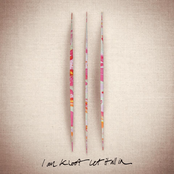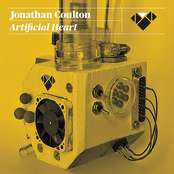
This certificate – awarded during the Second World War – is clearly either ARP or Home Guard related, and intriguing that the competition was held at a local pit. Gas training, perhaps, using rescue squad techniques learned from the mines? Just a thought. Image kindly supplied by Micheal Smith.
Here’s an interesting thing for a Thursday – can anyone shed any light on the above certificate, or the person to whom it was awarded please?
I was sent the image by reader Michael Smith who’s trying to find out about Horace, his grandfather, who apparently was a lifelong Brownhills man.
Micheal wrote:
Hello Bob,
I’m a friend of Martin Payton’s and mentioned that you maybe able to help a little bit with founding out about the history or background regarding my grandfather Horice and this certificate.
My grandfather lived in Brownhills all his life.
Hopefully you can shed some light on this for me and what the certification is all about?
Any help or tips as to where we can find out more would be a great help.
Thank you kindly
Mike Smith
I must say I have no idea about the specifics of the certificate in question – but I’m sure there will be readers out there who do, and also people who remember your Grandfather. I welcome reader contributions and tips here.
Thanks to Michael for a fascinating enquiry – if you can help, please do comment here or mail me – BrownhillsBob at Googlemail dot com. Cheers.

 RSS - Posts
RSS - Posts










Not quite on the money, but in 1939 Horace lived at 41 Poplar Avenue, and was a bakelite moulder seeking work, d.o.b. 25 Dec 1907. He was also a part time ARP (Air Raid Precautions) Warden. 1942 was too early for conscription into the mines, but, presumably, the increased demand for coal in wartime provided work opportunities.
Hi Bob
Brownhills Urban District Council minutes;-
“The ARP committee held a meeting on 2nd September 1942. The chairman reported on the success of the council’s civil defence service teams in the various civil defence competitions. The Decontamination clerk-instructor exhibited the cup which the council’s decontamination squad had won outright in the recent area competition. It was decided that two enlarged photographs of the squad in action be mounted and framed”
I wonder if these photos still exist, somewhere
kind regards
David
Unfortunately the Lichfield Mercury is not on the Archives for 1942, but the Tamworth Herals reports the Staffs copetition finals for Rescue and Decontamination were held at the old Norton Green Colliery at Brownhills in August. Trophies presented by AE Cameron CMG DSO.
Decontamination…1 Wednesbury 152.5 pts….2 Brownhills 148 pts
A decontamination squad at work at sea… Pathe News
http://www.britishpathe.com/video/decontamination-squad/query/guns
Hi Bob,
Those in any doubt of the horrors of a gas attack in W.W.1, had better read ‘Dulce et Decorum Est’ by Wilfrid Owen. Gas attacks were used frequently by the German Army, beginning with Chlorine gas in 1915, to Mustard gas in the latter stages of the war, with other terrible prescriptions in between. Yes, we used it as well, but our initial response was to the Ypres gas attack, the first time gas was used by the German army, as a poison, rather than an irritant.
There must have been some serious thought amongst the Establishment, that the Germans meant to carry on civilian warfare in the same way, in W.W.2. against the population o f Great Britain, for I well remember leaflets describing what to do, in the case of a gas attack, and gas masks were issued quite early on in the war. Hence the importance of the trained Decontamination Squad. Each gas survivor would need a different treatment, and the Decontamination Squad were trained to handle each one. Horace’s pride at being a member of the winning team and preserving this memento is understandable. Thank God this expertise was never needed.
You don’t have to go that far back, just refer to Aleppo!
on the subject of decontamination during the second world war i think you will find that was the reason the ball room of brownhills memouriall hall was converted into a hospital unit and the boiler house at the rear was built IRIS ARNOLD was the principal nurse there was always a faint smell 0f carbolic in the air scabies was a pricipal complaint dew to the fact lots of folk would sleep fully clothed at night in the air raid shelters another memory comes to mind there was a disinfecton comes to mind LYCAL which could be obtained
from the council house or local board as we called in those and i can assure you it didnt have the fragrence of evening in paris god bless
llll
Hi Bob,
I can’t be sure if we are talking about the same person or not. I had a great uncle who lived with my great grandad between Streets Corner and Shire Oak. He was born 1895 and died 1947. I don’t know much about him but the other brothers were colliers and his father worked at Walsall Wood pit where I understand he was in charge of the explosives.
If you could pass me details to Mike Smith perhaps we could compare notes and find we are long-lost cousins.
Best regards,
Chris Smith